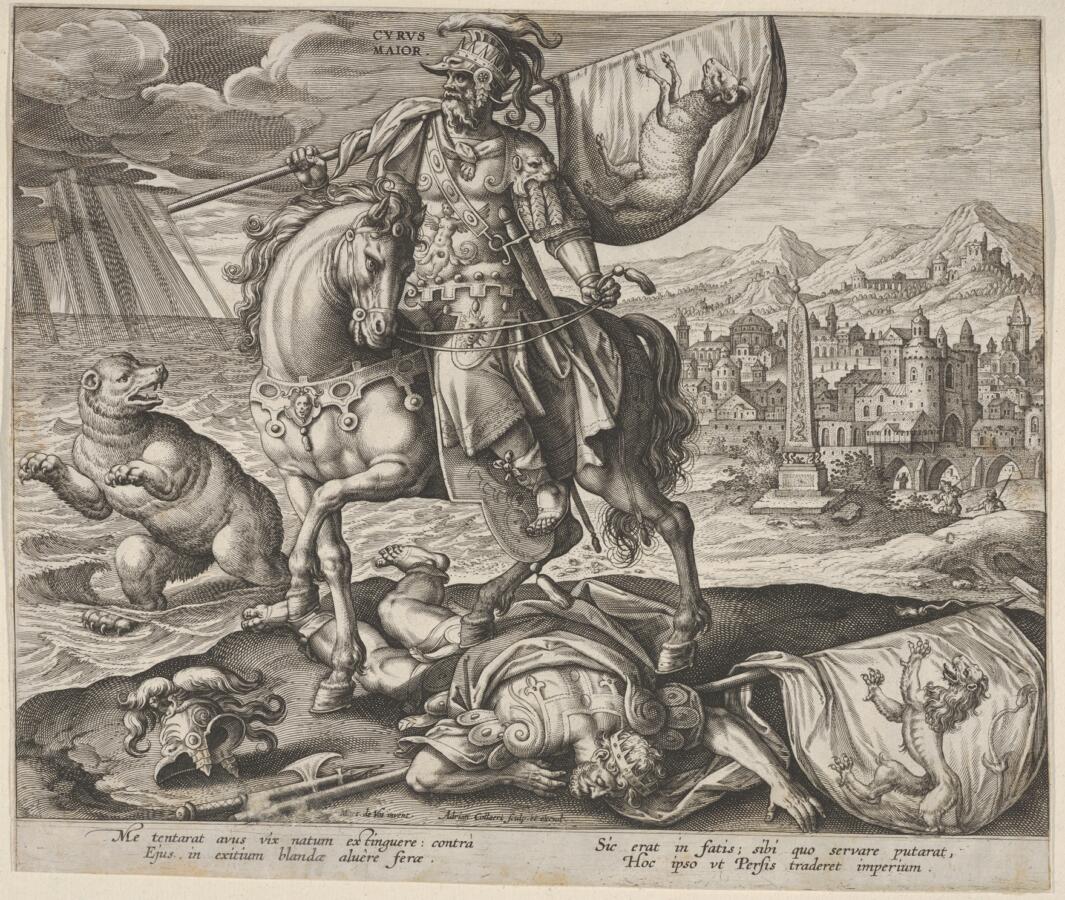The following article is reprinted with permission from From Text to Tradition: A History of Second Temple and Rabbinic Judaism (Ktav).
In the fall of 539 B.C.E., Cyrus (II) the Great, already king of Persia and Medea, vanquished the Babylonian army and gained control of the entire area of Mesopotamia. He immediately adopted a policy which was to be characteristic of his reign: he encouraged the repatriation of exiles and the rebuilding of their shrines, motivated by a benevolence which seemed to sit well both with his temperament and with the need to govern a large and far-flung empire.
In 538 B.C.E., Cyrus decreed that the Temple of the Jews in Jerusalem was to be rebuilt and that all the exiles who wished might return to Judea, the Persian province of Yahud. This decree inaugurated the period of the Second Temple, also known as the Second Commonwealth. The rise of Cyrus and the fall of Babylon were viewed by the Jews as God’s work. While then, as today, settling in the Land of Israel was an option exercised only by a devoted minority, the Jews of the Diaspora gave financial and moral support to the newly reestablished community.
With the beginning of the Persian period, a new kind of bureaucracy came into power. While at times the Judeans had trouble with the government, Jews throughout the empire were able to rise in the civil service and even formed military units that were deployed on the frontiers of the Persian Empire. Under Persian rule Jerusalem was rebuilt and its sacrificial ritual reconstituted. In addition, and a most important development, temporal (and not just religious) authority was granted to the high priesthood.

Help us keep Jewish knowledge accessible to millions of people around the world.
Your donation to My Jewish Learning fuels endless journeys of Jewish discovery. With your help, My Jewish Learning can continue to provide nonstop opportunities for learning, connection and growth.
Little is known about the period between the rebuilding of Jerusalem under Ezra and Nehemiah in the sixth century B.C. E. and the coming of Alexander the Great in the fourth, but the incomplete biblical picture of this era is supplemented by archaeological evidence. Sites in northern Palestine, especially along the coastal plain, show evidence of strong Phoenician influence, especially evident in the building techniques. At the same time, more southern sites show strong Aegean influence.
In fact, such influence was constantly on the increase in the centuries leading up to the Persian period. Imported pottery from the Hellenic world is found extensively. Most significant is the almost total dependence on Attic(Athenian) standards ofcoinage. Thus, it is evident that Hellenistic influence was already being felt throughout the country.
Other evidence indicates that Judea at the beginning of this era was an independent province. Samaria in the north remained a separate unit, however. A complex administrative bureaucracy collected and distributed taxes in kind. The discovery in Egypt of correspondence between the Jewish garrison of Elephantine (modern Assuan on the Nile) and the rulers of Jerusalem and Samaria has led to the realization that religious syncretism was still very much alive in this period. At the same time, many areas of Jewish law were moving toward standardization at this early date.

 In 538 B.C.E., Cyrus decreed that the Temple of the Jews in Jerusalem was to be rebuilt and that all the exiles who wished might return to Judea, the Persian province of Yahud. This decree inaugurated the period of the Second Temple, also known as the Second Commonwealth. The rise of Cyrus and the fall of Babylon were viewed by the Jews as God’s work. While then, as today, settling in the Land of Israel was an option exercised only by a devoted minority, the Jews of the Diaspora gave financial and moral support to the newly reestablished community.
In 538 B.C.E., Cyrus decreed that the Temple of the Jews in Jerusalem was to be rebuilt and that all the exiles who wished might return to Judea, the Persian province of Yahud. This decree inaugurated the period of the Second Temple, also known as the Second Commonwealth. The rise of Cyrus and the fall of Babylon were viewed by the Jews as God’s work. While then, as today, settling in the Land of Israel was an option exercised only by a devoted minority, the Jews of the Diaspora gave financial and moral support to the newly reestablished community.

